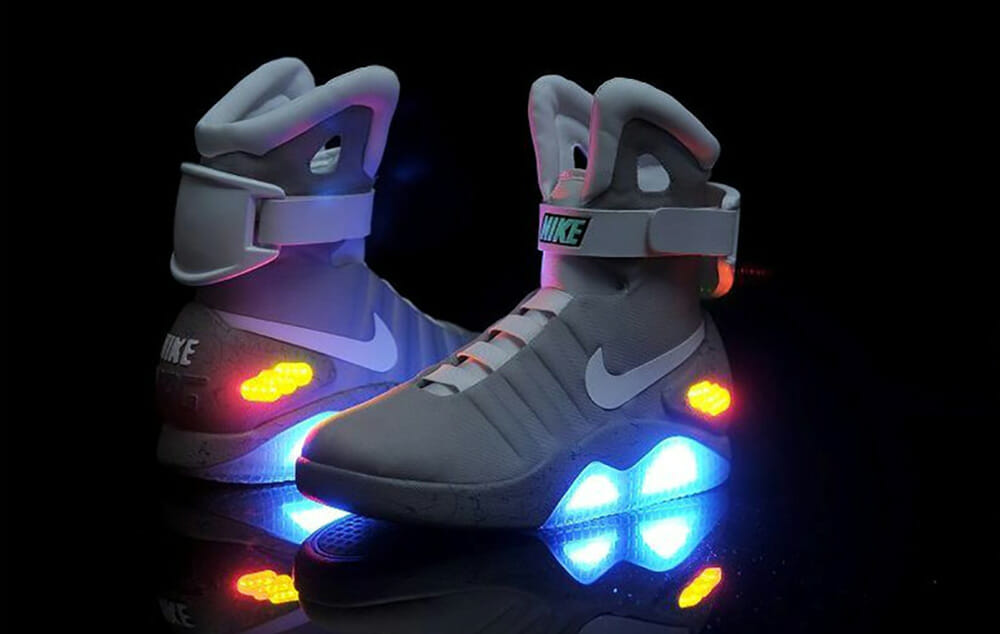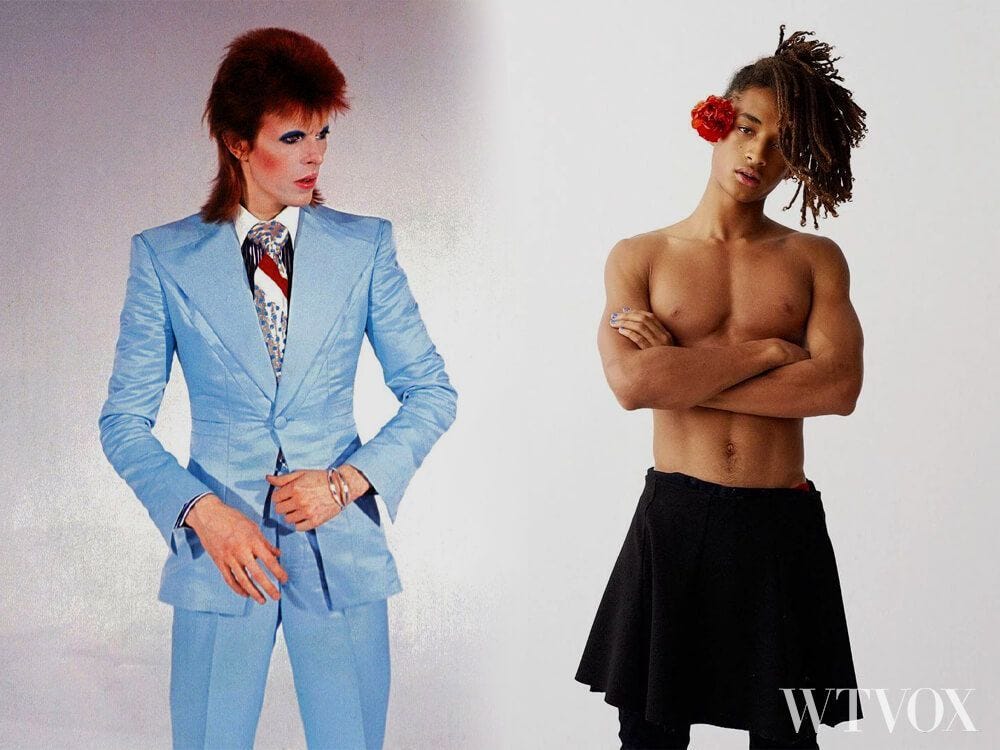An in-depth look into the concept of wearable technology; past, present and future.
We are often defined as tool-using animals; while correct to some extent – some animals use tools too – the humans differentiate from the other creatures thanks to their technological ability.
The capacity of conceiving, manufacturing, and using tools and constant desire to improve our capabilities is what makes us so special.
The word ‘technology’ is a combination of two Greek words.
‘Techne’ which means craft or art, and ‘logos’ which translates into ‘speech’.
Thus, technology can be defined as a ‘discourse on arts, both fine and applied.’
The wearable part of technology refers to small, portable sensors, nowadays used in fitness trackers, smartwatches, smart glasses, smart tattoos, and even fashion.
Wearable Technology – The First Recorded Eye Glasses
Long before the Google Glass and the ‘glasshole’ individual, there was the eyeglass.
One of the first wearable devices, the eyeglass was designed to enhance a person’s perception of the world and provide the wearer with clearer, enhanced vision.
The fascinating history of wearable tech begins over 700 years ago with Roger Bacon and the comments, on the first-ever use of corrective lenses, he made in his Opus Majus, c. 1266.
However, before the invention of the convex spectacles, the short-sighted had to find more ingenious ways to see.
Nero, the 5th Emperor of the Roman Empire, used polished emeralds to watch and see better his gladiators fights and later, in the Viking Age, the “lenses” were carved out of rock crystals.
Wearable Technology – Oldest Smart Ring
Let’s travel to China for our next stop on the history of wearable technology journey.
Given the recent media coverage, you might be tempted to think that Apple has invented the smart ring.
However, tech-infused creations that we can wear around our fingers are quite old.
Made in the Qing Dynasty era (1644-1911), this 1.2 cm long and 0.7 cm wide ring is a functional abacus that you can wear on the finger.
Now you know why they call it “the abacus ring.”
Wearable Technology – First Wearable Timepiece
Let’s take a quick trip to Germany, on our “history of wearable technology journey” to admire the Pomander (Bisamapfeluhr) watch.
Made in 1505 by Peter Henlein, a clockmaker in Nuremberg, “Pomander” is confirmed as the oldest known watch to date.
Not to confuse with ‘Nürnberger Ei’, thought to be Henlein’s first watch.
A far cry from today’s slim and precise watches, the Pomander was large and inaccurate.
However, rather than being just functional timepieces, these watches were status symbols. Expensive to make and, of course, to purchase.
Now, back to the ‘status symbol’ the Apple Watch launched half a millennium later in what it seems an inevitable historical recurrence.
As history repeats itself, why should the history of wearable technology make an exception?
Wearable Technology – First Wearables In Fashion
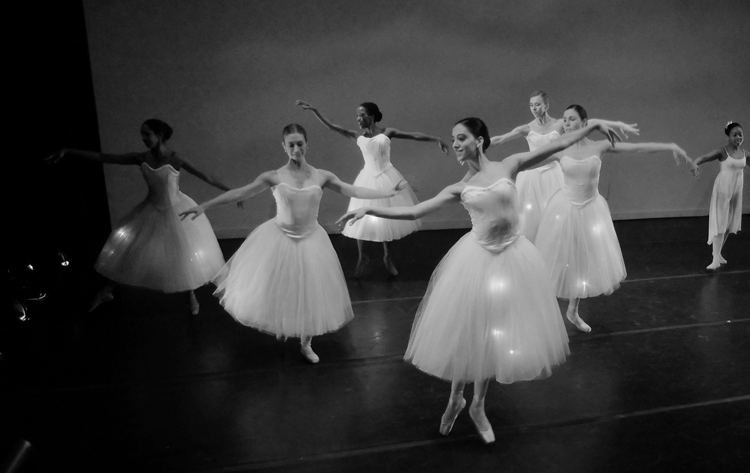
If you are interested in fashion technology, I am sure you are familiar with Cute Circuit, a London-based wearable tech pioneer, since 2001.
Founded by Ryan Genz and Francesca Rosella, the company uses “smart” fabrics to give the fashion as we know it a new form, a new modern image.
However, before Cute Circuit there was a world of fashion tech apparel:
“The introduction of illuminated ballet girls has added to the attractions of the grand stage. Girls with electric lights on the foreheads and batteries concealed in the recesses of their clothing.” 8 November 1884. Grey River Argus. Volume XXXI. Issue 5032. Page 1.
Thanks to the ‘Electric Girls’, wearables and the fashion tech touched New York’s fashion stages a long time ago.
Wearable Technology – First Wearable Camera
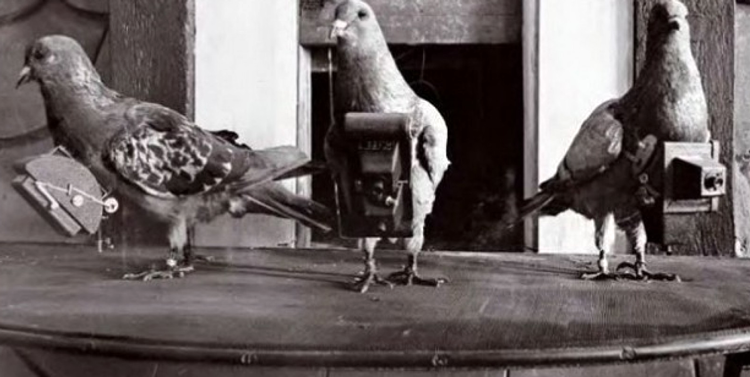
Let’s now check out a multi-million company, conceived in the back of a VW van dubbed “The Biscuit.” The company I am talking about is now called GoPro, with a valuation of 3.86 billion U.S. dollars last year.
So, before we had extreme sports athletes, police officers and even drones fitted with GoPro cameras, we have tried the wearable cameras on birds. I am serious. Pigeon photography was a technique invented in 1907 by a German apothecary, Julius Neubronner.
The pigeon was fitted with an aluminium breast harness and a very light, time-delayed miniature camera. This simple invention let the German army capture game-changing aerial photographs, behind the enemy lines.
Wearable Technology – First Virtual Reality ‘Headset’
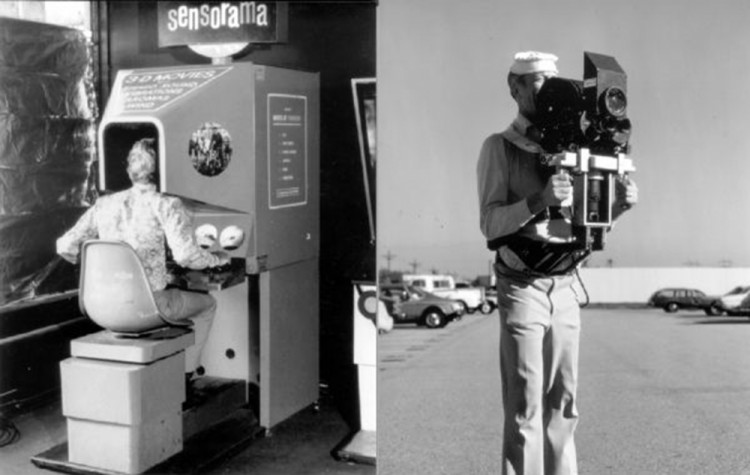
Past world war two, the history of wearable technology touches down the year of 1960. We find Morton Heilig, a cinematographer that has just created a new way of enjoying movies through what he calls the “immersive arcade experience.”
It is the first recorded attempt at blending cinema with virtual reality. Morton called his invention the “Stereophonic Television Head-Mounted Display” and patented the invention.
Two years later, in 1962, he patented another invention. The “Sensorama Simulator” (US Patent #3.050.870). An upgraded virtual reality simulator, with handlebars, binocular display, vibrating seat, stereophonic speakers, cold air blower and a device close to the nose that would generate odours, all synchronised with the action in the film.
Now if this does not make you think of the 4DX technology, stop now! Go to the cinema, see “The Hunger Games” and only then come back for more of the history of wearable technology.
And, when your seat starts shaking, remember that Morton Heiling invented the same tech, half of a century ago. Minus the comfy cushions, but you get the idea.
Wearable Technology – First Wearable Computer
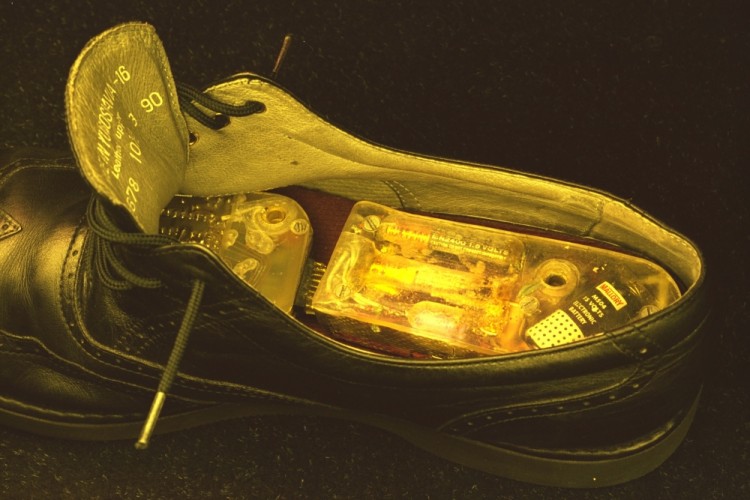
We are still in the sixties. You see, the sixties were not all about sex, drugs and rock and roll but also the years of technological excitement. The golden years of phreaking, the years of smart boxes, designed to hack the automated telephone systems.
However, two MIT professors Edward Thorp and Claude Shannon took the hacking to another level. They’ve designed and constructed the world’s first wearable computer.
Thorp’s and Shannon’s invention consists of two parts. One part hides in a shoe, and another part inside of a cigarette pack. The data-taker indicates the speed of the roulette wheel, and the computer sends the data to a hearing aid.
A simple but efficient system that let the mathematicians predict the outcome of many roulette games, in times when the computers were the size of rooms.
The wearable computer was invented in 1961, but it was mentioned for the first time only in 1966, in the revised edition of the “Beat the Dealer” book by Edward Thorp. Later on, Thorp disclosed in the LIFE Magazine, the 27th of March 1964 edition, pp. 80-91, another wearable computer.
A model for winning at the “Wheel of Fortune” gambling game. What can I say? Old habits die hard.
Wearable Technology – First Wristwatch Computer
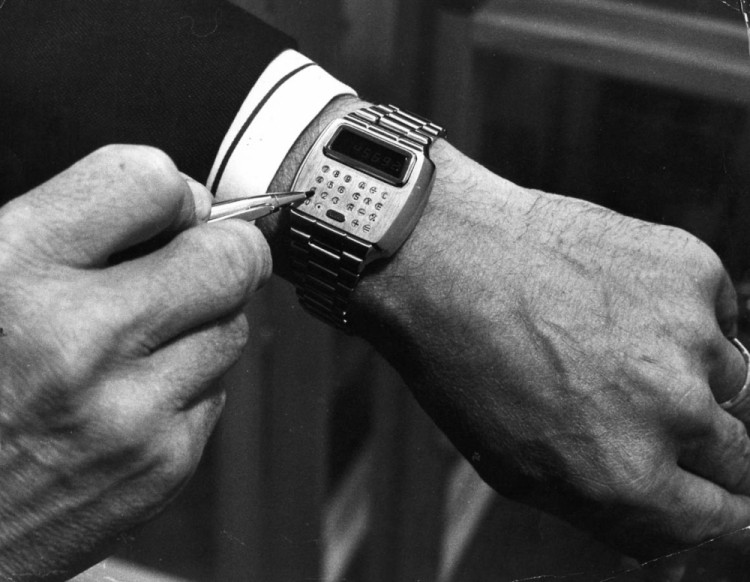
The first “wristwatch calculator” was introduced by Pulsar in 1975, just before Xmas time. The first “Limited Edition” of 100 pieces was available in 18KT solid gold for 3950$. Nevertheless, just like the gold Apple Watch, it was a huge success.
A few months later, a more affordable – stainless steel – version was offered for just 550$. “The Calculator” was promoted as the watch “For the man who had everything until now.”
Fact: The president of the U.S.A at the time, Gerald Ford very much wanted one for the Xmas of 1975. If you wonder if he got one, the answer is recorded in the history of wearable technology as such: “the president’s wife had the last word.” Amen.
Wearable Technology – First Portable Music Player
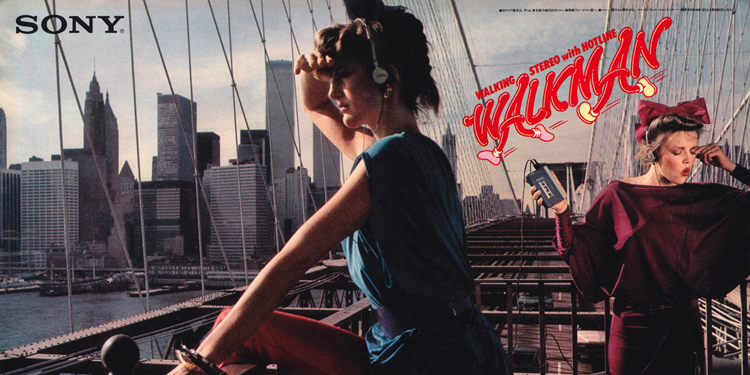
Personal portable music did not exist for most of human history, at least not in mainstream “fashion”. Not until the Sony Walkman came along.
Sony Walkman, or, the first-ever portable cassette tape player from Sony.
Also named “the icon”, the device went on sale on the 1st of July 1979 for $150.
It is the portable music player that “rocked” the music industry and changed how people experienced music ever since. Ummm….did I hear you say iPod?
Wearable Technology – First Wearable Computer
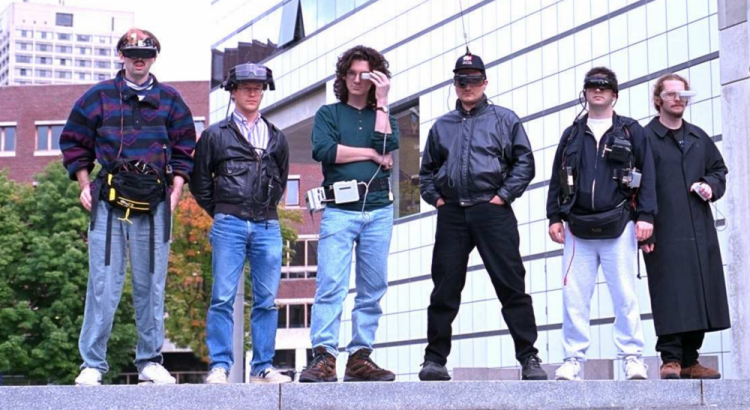
While still in the high-school, Steve Mann wired a 6502 computer (the hardware components used in the Apple-II) into a steel-frame backpack that allowed him to control flashbulbs, cameras, and photo-related gadgets on the move.
As a display he used a camera viewfinder CRT attached to a helmet, giving 40 column text. The whole “backpack” computer, including the flash-lamps, was powered by lead-acid batteries. Brave pioneers.
Although most people acknowledge Steve Mann as the father of Wearable Computing, he was far beyond “wearables” more than twenty years ago.
Mann’s inventions delve possible forms of co-evolution and even human-machine symbiosis. Thus seeing Steve Mann as merely an inventor of “wearables” is not accurate.
Wearable Technology In Fashion
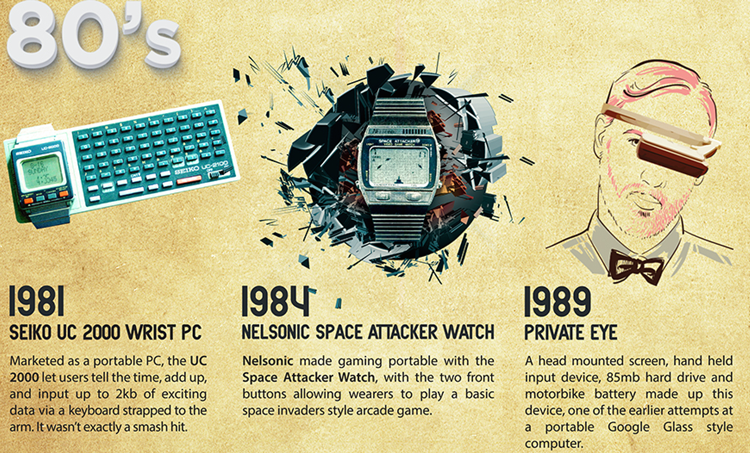
The ’80s and the ’90s are the times of the so-called “commercial pioneering” in wearable computing. In fact, the first wearable devices with mass-market impact arrived in the late ’70s. One of the first wearables with real commercial success was the calculator watch, launched by Hewlett-Packard in 1977.
Named the HP-01, the watch was sold at a top price of $850. That is the equivalent of 3.500 U.S. dollars in 2015. Apart from the calculator functions, the HP-01 was able, just like any modern smartwatches, to store names, addresses, phone numbers and even appointments.
Speaking about smartwatches, the history of wearable technology cannot ignore the Japanese company Casio and its “fashion statement,” at that time, the “Databank” watch.
It was so influential that the Police lead singer Sting wore one in the making of the song “Wrapped Around Your Finger” and Michael J. Fox showcased his watch too, in the movie “Back to the Future.”
Wearable Technology In The ’90s
So step by step, we have reached the nineties with our history of wearable technology. The ’90s are the times when we got busy with the dissolution of the Soviet Union and watching Bill Clinton “reinventing” sex.
Busy with Budweiser’s “Waaaasuup” advert and busy watching Friends and Seinfeld TV series. Still, we had time for the “sneaker phone”. Sports Illustrated came up with the sneaker phone as a free promo in the early ’90s. A shoe and a corded phone all-in-one. We had real, good fun.
Wearable Technology – First Contactless Payment Smart Bracelet
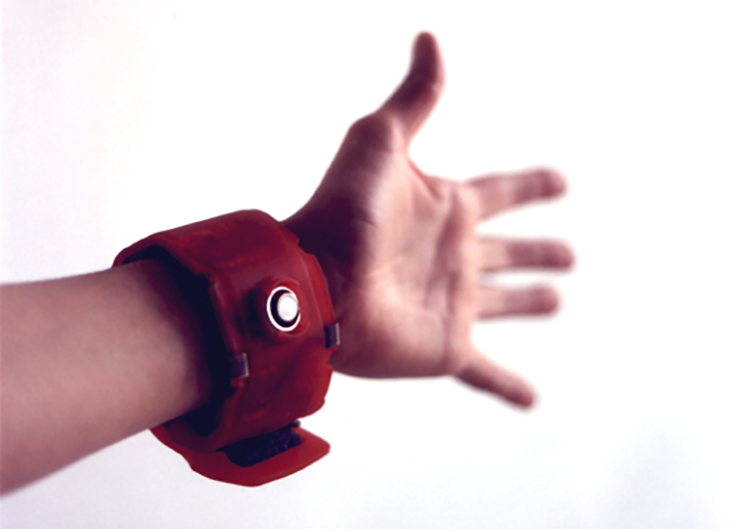
The mBracelet. Developed in 1999 by Studio 5050 in New York was “innovation on the wrist.”
Nowadays, most smartwatches come with coloured, personalised bracelets and also include a form of contactless payment.
And, this is what the mBracelet also had, but seventeen years ago: The bracelet came in eight bright colours and the ability to compute financial transactions with ATMs.
With regret, the mBracelet remained just at the prototyping stage. Seen as a far too futuristic idea at that time the project was let to vanish into obsolescence, and it died before it made it to the market. Just like many other amazing ideas, the mBracelet was ahead of its time.
Wearable Technology – Marketing Attempts At Wearable Tech
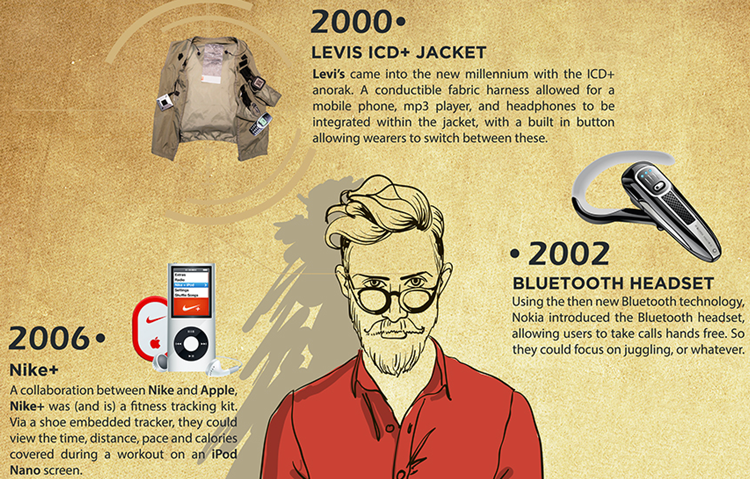
“Philips technology in every shirt and skirt” reads a late 90’s advert on the company’s Wearable Electronics Centre. It is the year when together with Levi’s, Philips launched the world’s first fashion tech garment. The ICD+ jacket.
Worth mentioning here is that the project was lead by a fashion designer obsessed with functionality over style and a high interest in developing innovative fabrics.
A designer like no other, he invented the R=rubber-wool and the temperature-sensitive material, SI-product used on another amazing fashion creation, the “Ice Jacket.”
His name is Massimo Osti; the Italian genius designer that changed the clothing and the fashion world forever.
Wearable Technology – First Commercial Wearables
Google Glass. A pair of smart glasses also called a head-mounted Android smartphone. On paper, Google Glass project was groundbreaking. In reality…Let’s just say that the trial release of the Glass did not go quite as expected.
There were major privacy concerns, endless headache complaints, and even reports of potential addiction caused by the use of the glasses for prolonged periods of time. Don’t know how, as the battery on mine never lasted more than 45 minutes on a single charge.
Not long before the Glass, in 2008, Fitbit, a wearable tech startup, launched its Fitbit Classic wristband. A fitness tracker that allowed the wearer to monitor the taken steps, the travelled distance, the kilocalories consumed, intensity levels, and sleep patterns.
It was the start of a new era, the use of wearable tech in fitness, healthcare, and even fashion thanks to the new generations of smartwatches, smart jewellery, and luxurious fitness trackers.
Wearable Technology – Fashion Brands And Wearable Tech
The fashion world started to show increasing interest in wearable tech and, in 2014, with the assistance of a solar manufacturer called Pvilion, Hilfiger launched a pair of “Solar Powered” jackets, for men and women.
The “Solar Powered” jacket has an array of water-resistant, flexible solar panels that snap on and off, to collect solar power for charging your gadgets. A cable runs to a battery pack located in one of the front pockets and a steel-frame backpack, which in turn has a dual USB port so that you can charge two devices at once.
The wearable technology has evolved. It has become lighter, smaller, smarter, more flexible, waterproof, and intelligent. We’ve come a long way from the Pomander watch and the abacus ring.
Wearable Technology – What Is The Future?

Wearable technology has a fascinating past. No matter how much we calculate or condition ourselves to foresee what comes ahead of us, we can never predict the future. The future is an unexpected wave crashing upon us, with its endless possibilities and surprises.
However, I see embedded sensors, implantable, and smart fabrics. I see new landscape and markets developed around smart sensors such as digital health, fashion technology, augmented reality.
I see the world “bathing” in an ocean of big data running on the blockchain. I see AI interacting with smart objects, autonomous cars, connected cities, embedded and implanted sensors. I see the beginning of a “digital persona.” I see a better you, a better me, a better world. Connected, synchronised, and safe.


